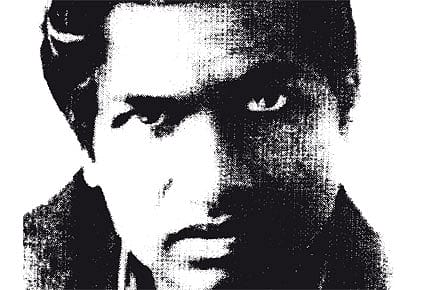Ramanujan’s Insights Yield a Startling Result

Work done in the last years of his life has been extended to reveal an unexpected formula
In a wonderful 2007 piece in Journal Sentinel, journalist Mike Johnson describes how Ken Ono became a mathematician. The inspiration dates back to 'a moment in adolescence when he wanted to become a professional cyclist, when he found the notion of being a mathematician "quite queer"'. 'He was 15 and living in Baltimore. His father, Takashi Ono, a Japanese immigrant, was a number theorist at John Hopkins University. One day, an envelope arrived for the elder Ono. There were Indian stamps on the front. Inside was a letter typed on rice paper.
Ono watched his father read the single page and could tell he was moved. The letter was from Ramanujan's widow, thanking him for helping pay for a bust honouring her late husband. At dinner that night, Ono's father told the story of Ramanujan.' Despite the story, 'Ono entered the University of Chicago planning to be a premed major. His medical career ended with the first exam in organic chemistry. In 1989, he received a bachelor's in pure mathematics and four years later earned a PhD from University of California.'
Decades later, Ono's mathematical career has in part mined the trove of mathematics that Ramanujan unveiled. In his latest piece of work, he has settled a long standing question in the theory of partitions, an area of mathematics where Ramanujan made some fundamental contributions.
2025 In Review
12 Dec 2025 - Vol 04 | Issue 51
Words and scenes in retrospect
A partition of a positive integer n is any non-increasing sequence of positive integers which add up to n. Consider the possible partitions of 3: 2+1 and 1+1+1 are the two different ways in which 3 can be partitioned, hence p(3)=2. The 'non-increasing' bit only ensures that, say, 2+1 and 1+2 are not counted as different partitions. A partition then is a measure of the different ways a number can be broken up in parts that add up to the whole.
The following is a list of the partitions of the first 20 numbers.
1, 2, 3, 5, 7, 11, 15, 22, 30, 42, 56, 77, 101, 135, 176, 231, 297, 385, 490, while p(100) = 190569292 and p(1000) = 24061467864032622473692149727991.
Clearly, as Ono notes, "Partition numbers are a crazy sequence of integers which race rapidly off to infinity. This provocative sequence evokes wonder, and has long fascinated mathematicians."
The great mathematician Euler was the first to systematically look at the question of an explicit formula that would give the value of p(n) for any n, but there was little progress made on this score over several centuries.
This led mathematicians to search for a pattern among the partitions that would make the search for a formula easier. Enter Ramanujan, whose keen intuition marked him out even in the rarefied company of mathematicians. Ramanujan considered the list above (actually, he looked at the first 200 partitions) and came up with relationships that no one else had noticed until then.
Consider the values of p(4), p(9), p(14) and p(19): they are 5, 30, 135 and 490; each of these numbers is divisible by 5. A year before his death at the age of 32, Ramanujan was able to show that starting with 4, the number of partitions for every fifth integer is a multiple of 5. He also discovered two more such patterns. Starting with 5, the number of partitions for every seventh integer is a multiple of 7, and starting with 6, the number of partitions for every 11th integer is a multiple of 11. These were unexpected insights. No one had suspected such patterns lurked among the list of partitions.
Over the next decade the search for similar patterns proved elusive, leading many to think these were the only such relationships that exist. A look at Ramanujan's notebook prompted Ono to start thinking of the question, and he came up with a remarkable result. He showed that similar patterns existed not just for 5,7 or 11 but in fact existed for all larger primes. They had been difficult to find because they were difficult to spot looking at any normal computation of partitions. For example, Ono showed that starting with 111,247 every 7722th number was a multiple of 13. Since then it has been shown that such patterns exist for all numbers that are multiples of primes other than 2 or 3; as of now the existence of such patterns for multiples of 2 or 3 remains an open question.
These patterns were not the only outcome of Ramanujan's work on partitions. Together with GH Hardy he came up with an approximation for p(n). A decade later Hans Rademacher came up with an exact formula that however was not of great help in calculating actual values because of its complexity.
Now, Ono working with a number of other talented mathematicians, has come up with a startling new insight: "We prove that partition numbers are 'fractal' for every prime. These numbers, in a way we make precise, are self-similar in a shocking way.
Our 'zooming' procedure resolves several open conjectures, and it will change how mathematicians study partitions." It is this insight, says Ono, that led to an explicit formula:
"We found a function, that we call P, that is like a magical oracle. I can take any number, plug it into P, and instantly calculate the partitions of that number. P does not return gruesome numbers with infinitely many decimal places. It's the finite, algebraic formula that we have all been looking for."
